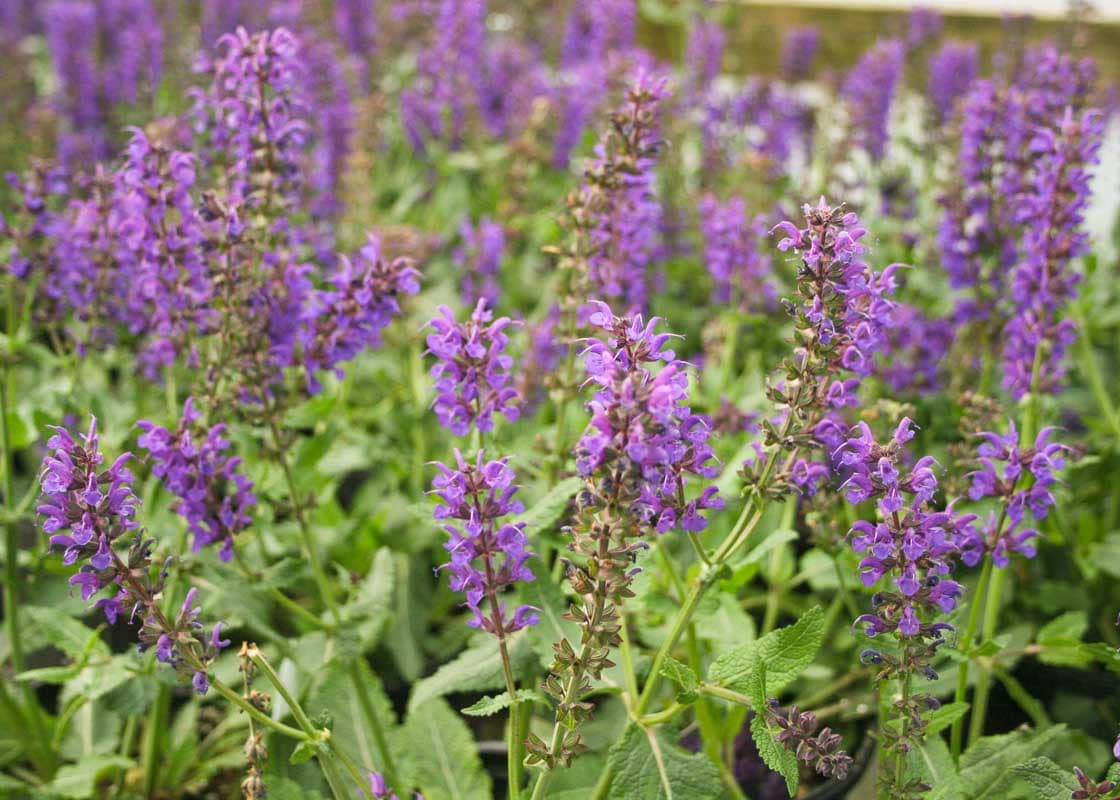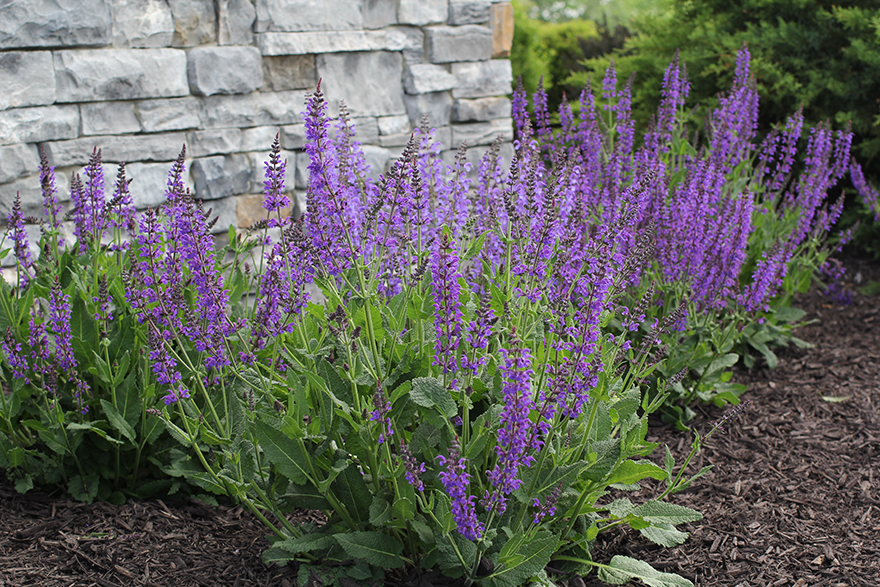May Night salvia (Salvia x sylvestris ‘May Night’) is an extremely popular perennial plant grown for its stunning display of deep violet-purple flowers held on deep green foliage. This low-maintenance, flowering sage is well-suited to gardens in USDA Hardiness Zones 3 to 8 and reaches a mature size of approximately 18 to 24 inches tall and wide.
If you are looking for an easy-care, flowering perennial that attracts pollinators like butterflies and hummingbirds, May Night salvia is an excellent choice.
How to Plant May Night Salvia ?
May Night salvia thrives in full sun locations with well-draining soil. Follow these simple tips when planting May Night sage:
- Select a site that receives at least 6 hours of direct sunlight per day
- Amend planting beds with compost or aged manure
- Space plants 18 to 24 inches apart in garden beds
- Dig a hole twice as wide and just as deep as the plant’s root ball
- Gently loosen pot bound roots before placing the plant in the hole
- Backfill the hole with native soil, firming the ground gently around the plant
- Water thoroughly after planting
For best results, plant May Night salvia in the spring after the last frost date for your region. However, container-grown plants can be installed anytime during the growing season.
May Night Salvia Growing Conditions
Once established, May Night salvia is quite drought tolerant and requires little supplemental water. However, during the first year, plan on watering new plantings weekly during the first growing season to encourage deep root establishment. Provide water during extended dry periods thereafter.
May Night salvia thrives in nutrient-rich, well-drained soil with a soil pH between 6.0 and 7.0. Use an all-purpose fertilizer in early spring to provide plants with necessary nutrients to fuel growth and flowering.
See also : Can you eat purple orchids ?
Propagating May Night Salvia
May Night salvia is easy to propagate by stem cuttings or division:
- Stem cuttings – Take 3- to 6-inch tip cuttings from healthy stems in summer. Strip leaves from the lower half of cuttings. Dip the bare end in rooting hormone then insert into pots filled with well-draining potting mix. Maintain consistent moisture and warmth until roots form in several weeks. Gradually transition rooted cuttings to the garden after hardening off.
- Division – Carefully dig up mature plants in early spring and divide large clumps using a sharp tool like pruning shears or a knife, ensuring each division has some roots and several stems. Replant 12 inches apart and water well. Dividing sage every 3 years helps maintain plant vigor.
Pests, Diseases, and Problems
May Night salvia is relatively pest and disease free. However, potential issues to watch for include:
- Powdery mildew
- Leaf spot
- Thrips
- Slugs and snails
- Rabbits, deer, and other browsing wildlife
Practice good garden sanitation by removing affected foliage, avoiding overhead watering, and allowing plants to dry adequately between waterings. For persistent issues, contact your local extension office for organic treatment recommendations. Protect plants against animal damage with physical barriers as needed.
Conclusion
With proper planting and care, May Night salvia is sure to be a garden standout from late spring until frost. The vibrant flowers are magnets for pollinators while the aromatic foliage has a pleasant herbal fragrance. Compact, sturdy plants are ideal for both beds and borders. For the best display, plant May Night salvia in groups of three or more. You will enjoy years of beautiful blooms and easy-care performance from this popular sage.


